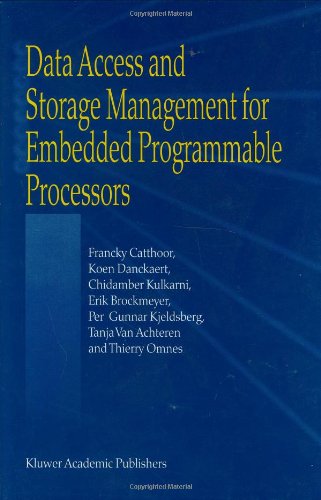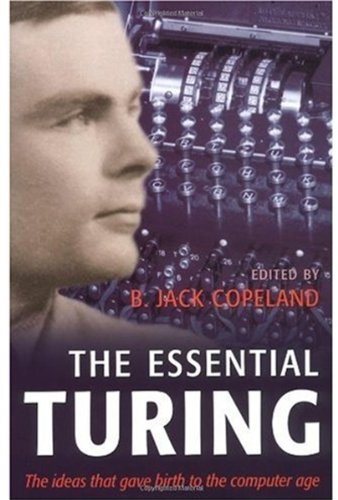Mohsen Guizani, Abdella Battou9780824707071, 0824707079
Table of contents :
Optical Switching/networking And Computing For Multimedia Systems……Page 1
Foreword……Page 7
Preface……Page 9
Contributors……Page 16
Contents……Page 14
Contents……Page 17
1 Introduction……Page 18
1.1 Today’s Problems……Page 20
1.2 Tomorrow’s Promises……Page 21
2.1 Overview……Page 24
2.2 The Envisioned Data-centric Networking Paradigm: Optical Internet……Page 25
3.1 Overview……Page 26
3.2 The Router-centric Model……Page 27
3.3 The Hybrid Router/ Oxc-centric Architecture Integrated Model……Page 28
3.3.1 Overview Of Mpls……Page 29
3.3.2 The Hybrid Network Model……Page 30
4.1 Overview……Page 34
4.2 Dynamic Lightpath Computation……Page 35
4.2.2 The Constraint-based Shortest Route Selection Problem……Page 36
4.2.3 The Wavelength Assignment Problem……Page 37
4.3 Provisioning Lightpaths In A Network With Full Wavelength Conversion Capabilities……Page 38
4.4 Provisioning Lightpaths In A Network Without Wavelength Conversion Capabilities……Page 39
5 Conclusion……Page 40
Contents……Page 41
1 Introduction……Page 42
2 Overview Of Mac Protocols……Page 43
3 Design Of Multimedia-mac Protocols……Page 46
4 Analytical Modeling Of The Multimedia-mac
protocols……Page 47
4.1.1 G/ G/ 1 Queue……Page 49
4.1.3 M/ G/ 1 Queue……Page 50
4.1.4 M(x)/g/1 Queue……Page 51
4.2.1 Tdm Subprotocol Model……Page 53
4.2.2 Rsv Subprotocol Model……Page 54
4.2.3 Cnt Subprotocol Model……Page 55
4.3 Numerical Evaluation Of The Waiting Time Distribution……Page 56
4.5 Admissible Region……Page 59
5 The Application Of Multimedia-mac On Wdm
networks……Page 62
5.1 The M-wdma Architecture……Page 63
5.2 The M-wdma Protocol……Page 66
5.2.2 The Rsv Subprotocol……Page 67
5.2.3 The Cnt Subprotocol……Page 68
5.3 Control Channel Con.guration……Page 69
5.4 Modeling Of The M-wdma Network……Page 70
5.4.1 The Tdm Subprotocol Model……Page 71
5.4.2 The Rsv Subprotocol Model……Page 72
5.4.4 Admissible Region Comparison……Page 75
6 Conclusion……Page 78
References……Page 79
Contents……Page 80
1 Introduction……Page 81
1.2 Summary Description Of The Selected Lightwave Data Storage Network……Page 83
1.3 Description Of Components And Transmission Technique To Be Modeled……Page 85
1.4 Optical System Performance Factors……Page 86
2.2 Allowable Distances To Remote Location……Page 89
3.1 Matlab Simulink System Modeling Description……Page 94
3.2 Modeling The Intensity-modulated Direct-detection (im-dd) Optical Digital Communication System……Page 95
3.3 Intensity Modulated (im) Transmitter Model……Page 96
3.4 Baseband Modulation And Demodulation……Page 97
3.5 Model Of Network Intermediate Nodes With Passive Star Couplers And Optical Amplifiers……Page 98
3.6 Direct Detect (dd) Receiver Model……Page 99
4.2 Signal-to-noise Ratio (snr) And Bit Error Probability (ber) Calculations……Page 105
5.1 Baseline Input Parameter Set For The Opsan Simulation Model……Page 107
5.2 Baseline Simulation Run Results And Displays……Page 111
6.1 Optical Ampli.er Gaussian Noise Parameters……Page 117
6.3 Laser Amplitude Intensity Noise (rin) Effects……Page 120
6.5 System Noise Dependence On Optical Filter Bandwidth……Page 122
7.1 Optical Amplifier Placement In The Network……Page 125
7.3 Allowable Wdm Channels……Page 126
7.4 Prediction Of Aggregate Network Capacity……Page 132
References……Page 133
Contents……Page 134
1 Introduction……Page 135
2.1 Virtual Topology Mapping……Page 137
2.2 Routing And Wavelength Assignment (rwa)……Page 138
2.3 Dynamic Wavelength Routing……Page 139
3 Wavelength Convertible Routed Optical Networks (wcron)……Page 140
3.2 Dynamic Wavelength Routing With Wavelength Conversion……Page 141
4 Qos Issues On Wavelength Routing Networks……Page 142
5 Multicasting In Wavelength Routing Networks……Page 143
References……Page 144
Contents……Page 147
1 Network Management……Page 148
1.1 Distributed Network Management Architecture……Page 150
1.2.2 Distributed Approach……Page 152
1.3.1 Topology Manager……Page 153
1.3.2 Connection Manager……Page 155
1.3.3 Fault Manager……Page 157
2.1 Addressing……Page 158
2.2 Uni Neighbor Discovery And Address Resolution Services……Page 159
2.3 Signaling Transport……Page 161
2.4 Description Of The Uni Signaling Attributes……Page 162
2.5 Rsvp Extensions For Uni Signaling……Page 164
2.5.1 Rsvp Messages……Page 165
2.5.3 Lightpath Establishment At The Destination Interface……Page 168
2.5.4 Uni-n Fsm……Page 169
3 Routing In Optical Networks……Page 170
3.1 Architectural Models For Optical Routing Information Exchange……Page 173
3.2 Candidate Adaptive Routing Protocols For Wdm Networks……Page 174
3.2.1 Routing Information Protocol (rip)……Page 175
3.2.3 Private Network To Network Interface (pnni)……Page 176
3.2.4 Open Shortest Path First (ospf)……Page 177
3.3.1 The Qos Extension To Ospf……Page 178
3.3.2 Ospf Extension Using Opaque Lsas……Page 179
3.4.1 Lightwave-ospf……Page 180
3.4.2 Tron Architecture……Page 181
3.4.3 Integration Of Provisioning/ Signaling With Tron……Page 185
3.4.4 The Casino Framework……Page 186
3.4.5 The Tron Architecture In Terms Of The Casino Framework……Page 189
References……Page 192
Contents……Page 193
1 Introduction……Page 194
2 Routing And Path Establishment For Point-to-point Communication……Page 197
2.1 Dynamic Wavelength Selection And Path Establishment……Page 199
2.2 Combining Adaptive Routing, Wavelength Selection, And Path Establishment……Page 202
2.3 Adaptive Routing Based On Global Information……Page 207
3 Point-to-multipoint Communications Over Wdm Networks……Page 212
3.1 Network Model……Page 214
3.2 Problem Formulation……Page 215
3.3 Multicast Heuristics For Wdm Networks……Page 218
3.5 Conversion Bound Multicast (cbm) Heuristic……Page 219
3.5.1 Cbm Basic Steps……Page 224
4 Conclusion……Page 227
References……Page 228
Contents……Page 231
1 Introduction……Page 232
2 A General Routing Cost Model……Page 234
3.1 Multiple Point-to-point Routing……Page 238
3.2 Multicast……Page 239
3.3 Multiple Multicast……Page 242
4 Off-line Routing In Unreliable Networks……Page 243
4.1 Multiple Point-to-point Routing……Page 244
4.2 Multicast……Page 247
4.3 Multiple Multicast……Page 249
5 On-line Routing In Reliable Networks……Page 250
5.1 Multiple Point-to-point Routing……Page 251
5.2 Multiple Multicast……Page 252
6.1 Multiple Point-to-point Routing……Page 253
6.2 Multiple Multicast……Page 255
7.1 Group Membership Updating For On-line Multiple Point-to-point Routing……Page 257
7.2 Group Membership Updating For On-line Multicast……Page 258
7.3 Group Membership Updating For On-line Multiple Multicast……Page 259
References……Page 261
Contents……Page 263
1 Motivation……Page 264
3 Optical Technology……Page 265
4 Optical Nonlinear Devices……Page 267
5.1 Space-division Switches……Page 268
5.2 Time Division Switches……Page 270
5.3 Wavelength Division Switches……Page 272
6.1 Recent Proposals……Page 274
6.2 Terahipas Switch……Page 276
6.3 Shared-medium Switches……Page 277
6.4 Parallel Switch……Page 278
6.5 Electrocapillary Optical Switch……Page 280
6.6 Recent Projects……Page 282
7 Summary……Page 283
References……Page 284
Contents……Page 285
1 Introduction……Page 286
2 Three-stage Clos Networks……Page 288
3.2 Optical Interconnections……Page 291
3.3 Broadcast-and-select (star And Ring Couplers)……Page 292
3.5 Photonic Cell Buffering……Page 293
4.1 Wdm Burst Switching Project……Page 294
4.2 The Optima System……Page 296
4.3 The Atmos Photonic Switch……Page 297
5.1 Switch Functionality……Page 299
5.1.1 Input Modules……Page 300
5.1.3 Cell Switching Fabric……Page 301
5.1.5 System Management……Page 302
5.2.1 The Core Switch Module (csm)……Page 303
5.3 Sizing Considerations……Page 305
5.4.2 Input Parameters……Page 306
5.4.4 Simulation Methodology……Page 307
5.4.6 Simulation Results……Page 309
References……Page 311
Contents……Page 315
1 Introduction……Page 316
2 Advantages And Limits Of Optical Interconnection……Page 319
3 Optoelectronic Device Array……Page 321
3.1 Smart Pixel Array……Page 322
3.2 Multiple-quantum-well (mqw) Modulator……Page 323
3.3 Vertical-cavity Surface-emitting Laser (vcsel)……Page 326
3.4 Performance Comparison Of Electrical And Free-space Optical Links……Page 330
4 Imaging Of Dilute Arrays……Page 331
4.1 Macro-optics……Page 332
4.2 Micro-optics……Page 335
4.3 Hybrid Optics……Page 336
4.4 Minilens Optics……Page 338
5 Spot Array Generator……Page 340
6 Optical Interconnection Networks……Page 345
6.1 Optical Multimesh Hypercube Network……Page 347
6.2 Dynamic Interconnection Networks……Page 350
6.2.1 Crossbar……Page 351
6.2.2 Multistage Interconnection Networks……Page 358
7 A 3d Optoelectronic Processor Architecture……Page 371
8.1 Optomechanics……Page 375
8.2 Planar Optics……Page 376
8.3 Stacked Optics……Page 378
9 Summary……Page 379
References……Page 380
Contents……Page 391
1 Introduction……Page 392
2 Signed-digit Numbers……Page 393
2.1 Tsd Addition/ Subtraction……Page 394
2.2 Two-step Recoded Tsd Addition/ Subtraction……Page 396
2.3 One-step Nonrecoded Tsd Addition……Page 398
3 Tsd Multiplication……Page 400
3.1 Recoded Tsd Multiplier And Multiplicand……Page 401
3.2 Nonrecoded Tsd Multiplication Using Only Recoded Multiplier……Page 402
3.3 Nonrecoded Tsd Multiplication With Carries……Page 403
4 Tsd Division……Page 404
5 Tsd Adders And Multipliers Using Redundant Bit Representations……Page 407
5.1 Redundant Bit Representation (rbr)……Page 408
5.3 Rbr Minimization For The Nonrecoded One-step Tsd Adder……Page 410
5.4 Rbr-based Optical Implementations Of Tsd Addition……Page 411
5.5.1 Rbr Based Recoded Tsd Multiplier And Multiplicand……Page 417
5.5.3 Rbr Based Nonrecoded Tsd Multiplication With Carries……Page 418
5.5.4 Rbr Based Nonrecoded Tsd Multiplication Without Carries……Page 419
5.6 Summary……Page 420
6.1 Ss Cascaded Correlator Architecture……Page 422
6.2 Design Of Recoded Tsd Adder……Page 424
6.3 Design Of Nonrecoded Two-step Tsd Adder……Page 429
6.4 Design Of Nonrecoded One-step Tsd Adder……Page 434
6.5 Design Of Recoded Tsd Multiplication……Page 436
6.6 Design Of Nonrecoded Tsd Multiplication Using Only Recoded Multiplier……Page 439
6.7 Design Of Nonrecoded Tsd Multiplication With Carries……Page 440
6.8 Summary……Page 445
7 One-step Classified Tsd Addition And Its Incoherent Implementation……Page 448
7.1 Digit Classification And Joint Spatial Encoding……Page 449
7.2 Optical Implementations……Page 453
References……Page 458
Contents……Page 461
1 Introduction……Page 462
2 The Posc System……Page 463
2.1 The Posc Algorithm……Page 464
3 Encoder Design……Page 466
3.1 Design I……Page 467
3.2 Design Ii……Page 471
3.3 Conclusion……Page 472
4.1.1 Toggle Flip-flop……Page 473
4.1.2 S-r/ J-k Flip-flop……Page 475
4.2 Optical Register Design……Page 476
4.2.1 Design I……Page 477
4.2.2 Design Ii……Page 479
4.3 Conclusion……Page 481
5.1 Multiprocessor Design……Page 482
6 Posc: An Efficient Implementation Of Modified Signed-digit Arithmetic……Page 490
6.1 Msd Arithmetic……Page 491
6.2 New Symmetric Recoding Algorithm……Page 492
6.3 Carry-free Adder Design I: Direct Implementation……Page 494
6.4 Carry-free Adder Design Ii: Truth Table Partitioning……Page 497
6.5 Conclusion……Page 500
7 Posc: Edge Detection Using The Roberts Operator……Page 503
7.1 Roberts Operator……Page 504
7.2 Design……Page 505
7.3 Simulation……Page 506
8 Posc: Morphological Transformation……Page 509
8.1 Morphological Operations……Page 510
8.2 Posc Based Morphological Transformations……Page 511
8.3 Posc: Morphological Hit-or-miss Transformation……Page 514
References……Page 516







Reviews
There are no reviews yet.